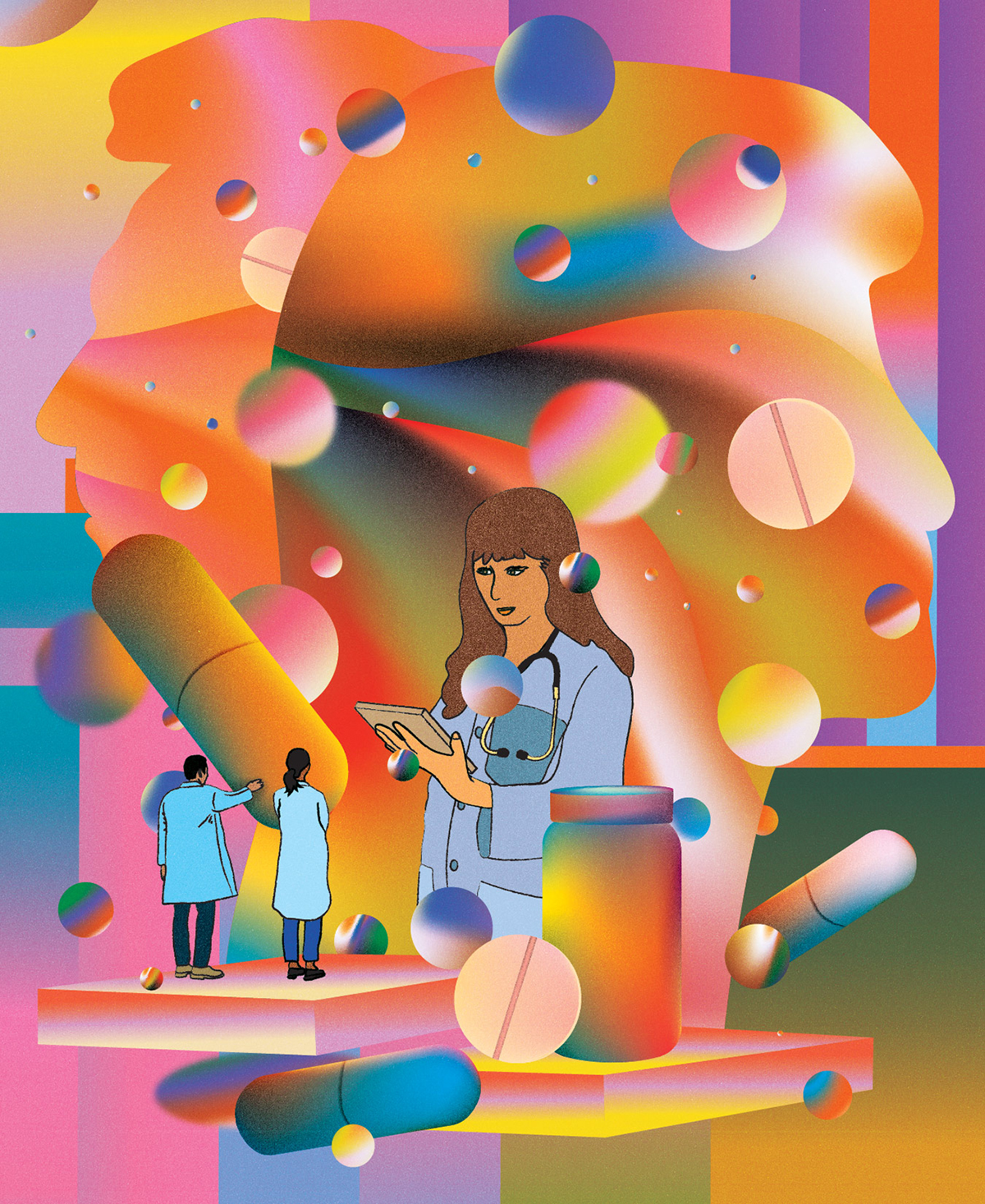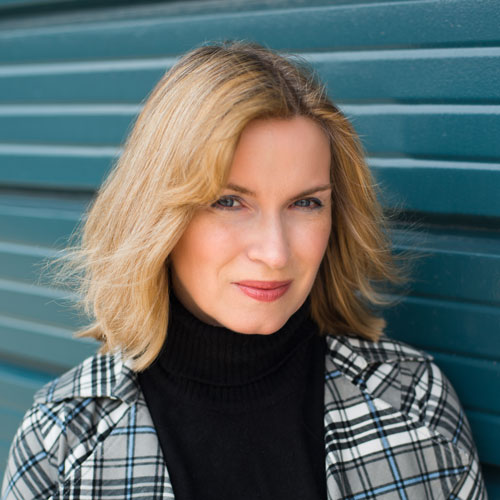About eight years ago, artificial intelligence seemed poised to revolutionize health care. IBM’s much-hyped AI system, known as Watson, had rapidly morphed from winning game-show contestant to medical genius, able to provide diagnoses and treatment plans with lightning speed. Around the same time, Geoffrey Hinton, a U of T professor emeritus, famously declared that human radiologists were on their way out.
Now, it’s 2024: radiologists are still with us, and Watson Health is not. Have AI and medicine parted company? Quite the opposite, in fact: today, the marriage of disciplines is more vibrant than ever.
At the Temerty Centre for AI Research and Education in Medicine, director Muhammad Mamdani is leading developments that are transforming the field. The centre has more than 1,400 members in 24 universities across Canada and is, Mamdani believes, the largest hub for AI and medicine in the world.
In his role as vice-president of data science and advanced analytics at Unity Health Toronto – a position he held prior to the centre’s official launch in 2020 and still retains – Mamdani oversees a team that has created more than 50 new AI solutions, the majority of which are now being deployed.
U of T’s combined resources have been essential to the success stories emerging from both institutions. “We have one of the top medical schools in the world,” says Mamdani. “As well as highly ranked computer-science, electrical and computer engineering, and statistics departments. So, we’ve got an incredibly talented pool of researchers.”
One of the biggest success stories has been CHARTwatch. The algorithm runs every hour on the hour, analyzing information from patients’ electronic records to predict whether the patient’s condition will deteriorate and, when the risk exceeds a certain threshold, page the medical team.
Joint human-AI collaboration is what’s driving our reduction in mortality.”
CHARTwatch, a Unity Health initiative, has been in operation since 2020 and has been trained on the data of more than 20,000 patients. At the time of its implementation, mortality rates in St. Michael’s Hospital (part of Unity Health) were much higher than usual due to COVID-19. But following the deployment of CHARTwatch, the hospital saw a 26 per cent drop in unanticipated mortality compared to pre-pandemic levels. “Peoples’ lives are being saved with solutions like this,” says Mamdani.
Another algorithm in use, the ED RN Assignment Tool, has reduced the time registered nurses (RNs) spend on scheduling in emergency departments (EDs). “They were struggling with making assignments, because there are all sorts of rules,” says Mamdani. The new tool reduces the number of times that any individual nurse is repeatedly assigned to the same role or location within the same series of shifts; it also makes sure that each role is assigned the number of required nurses, each of whom is only assigned to roles or locations that they are qualified to fill.
Since the tool’s deployment in 2020, the senior nurse has found that this work can be completed in one minute instead of 90. “With this,” says Mamdani, “we’re giving time back to clinicians so they can spend it on more valuable activities, such as patient care.”
The genesis for these tools is most often clinicians themselves, rather than data scientists, says Mamdani: “We get our ideas from people on the ground because they know what the issues are.”
The continuing involvement of health-care providers in AI use and development is a key point. About 10 per cent of the Canadian workforce is involved in health care, and, like employees in other fields, many may fear replacement. Mamdani emphasizes that humans must continue to drive AI – not the other way around.

While algorithms have sometimes been shown to outperform clinicians, it isn’t always the case. This is why, for the moment, AI is never the sole decision-maker. “For CHARTwatch, for example, we are very firm that it should not decide for clinicians, but with them. That kind of joint human-AI collaboration is what’s driving our reduction in mortality.”
To drive this message home, Mamdani says the Temerty Centre for AI Research and Education in Medicine performs an important role as a place where practitioners in the community can learn more about AI, and data scientists can learn about health care. “A huge focus for us is to educate health-care providers – not only about AI’s potential to improve the health-care system, but about the challenges.” These include ethical considerations around algorithmic gender and racial bias, how well the algorithm performs and how to adopt AI into clinical practice.
“It’s very hard to do AI without data,” says Mamdani, “and where do you go for it? MIMIC is the world’s most publicly used clinical dataset, but researchers need more. They also deal with questions of where to store the data, and whether they have the computing power to do the analyses they want to do.”
These questions have led the centre to create the Health Data Nexus on Google Cloud, which contains multiple publicly available, large health datasets that community members can access and contribute data to. (Identifiers such as name, address and birthdate are removed.)
What does the future hold for AI in medicine? Mamdani is particularly excited about how it will enable patients to engage in greater self-care: many who might otherwise have been hospitalized will be able to access providers while still at home. “Patients will have monitors and sensors that they can apply themselves, allowing physicians and nurses to videoconference with them and monitor their progress. This could free up hospital beds,” he says. “AI may also be able to monitor you. If it detects something wrong, it could flag your provider immediately.”
Mamdani is clearly proud of the achievements of both Unity Health Toronto and the Temerty Centre for AI Research and Education in Medicine, which launched less than four years ago. But he is careful to strike a cautious note when discussing the future, so as not to repeat the false promises made years ago.
At the same time, “if we want to live in a society that advances, we have to dream of what’s possible,” he says. “Educating people about AI’s amazing potential, along with its limitations, will lay the foundation for societal acceptance – and the ongoing development of amazing products that we can actually use.”
This article was published as part of our series on AI. For more stories, please visit AI Everywhere.
To learn more about AI in health care, watch the third episode of U of T podcast What Now? AI, with Christine Allen, a professor at the Leslie Dan Faculty of Pharmacy, and Andrew Pinto, an associate professor at the Temerty Faculty of Medicine and the Dalla Lana School of Public Health, and a family physician at St. Michael’s Hospital.




2 Responses to “ Healing Power ”
A fascinating and informative article.
All good, brilliant and necessary technology. I am a practicing physician in a small Ontario town. The cost of maintaining an efficient and modern office are rising yearly -- staffing, electronic medical equipment and software, rent, leases, insurance and other fees. And we are not free to raise the rates we charge. Hence, there is no way to generate income to offset these rising costs, and innovative new technologies such as AI are not available. So, how can this brilliant and useful technology be incorporated into the general practice of medicine?